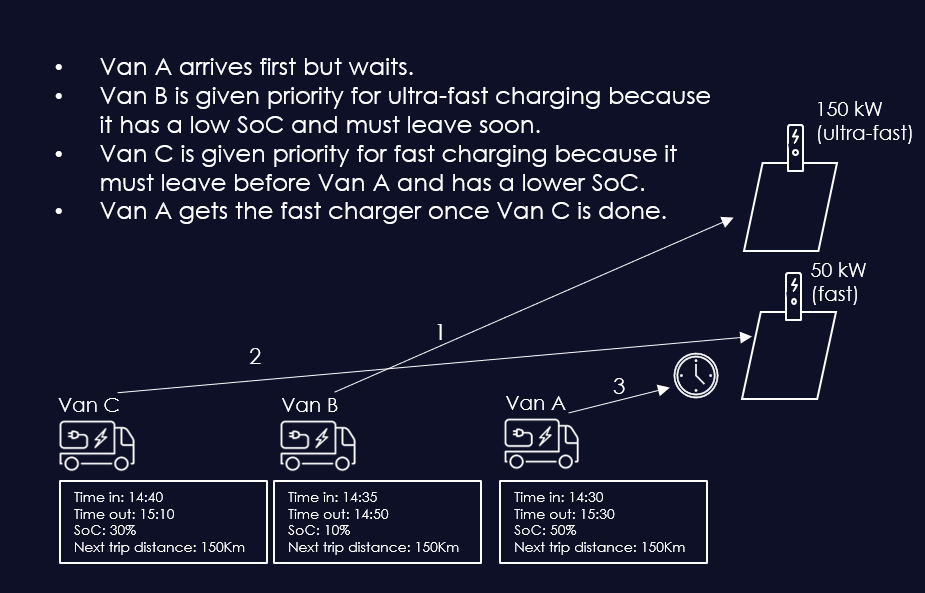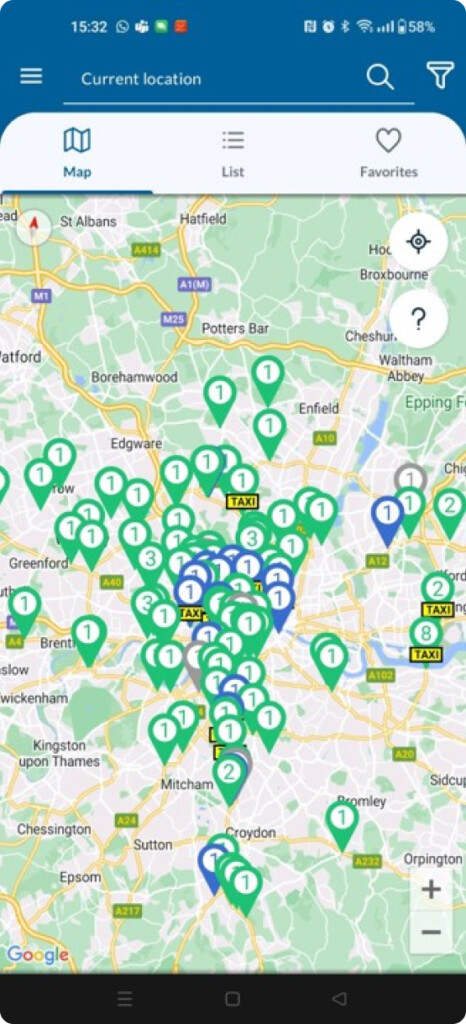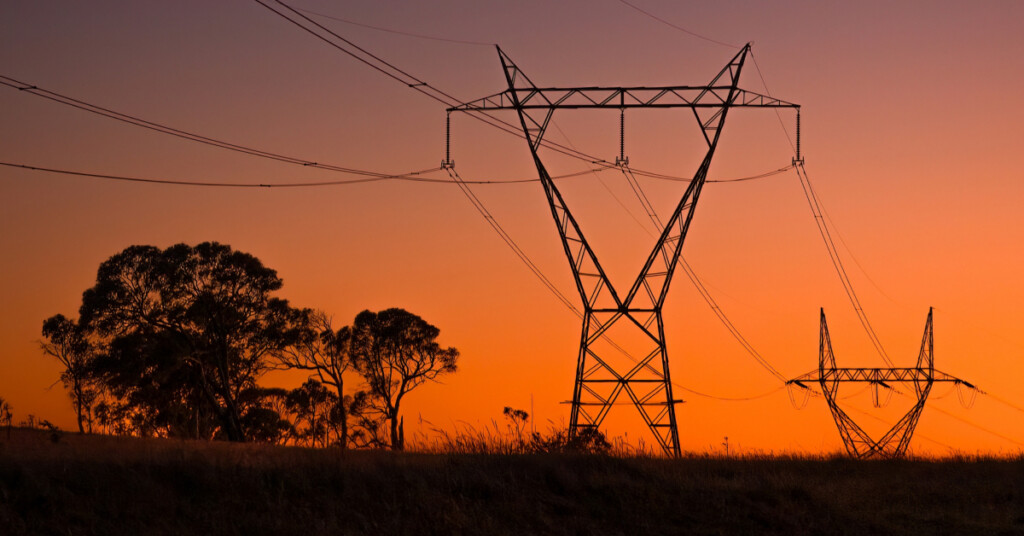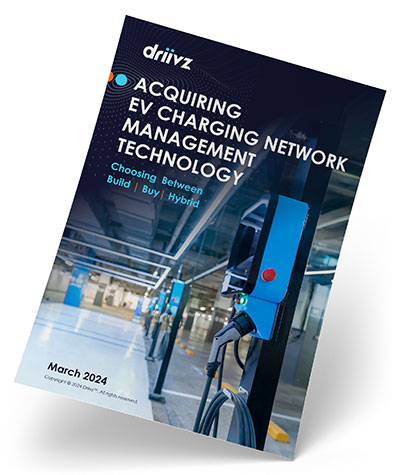Fleets only comprise about 20% of all vehicles on the road in Europe. However, while most vehicles are parked 95% of the time, fleet vehicles are constantly on the move. Consequently, they make up about 40% of total kilometers traveled, and contribute about 50% of emissions from road transport. So it’s no surprise that, as EV adoption takes off, rising fuel costs and regulations on restricting emissions are making fleet electrification a priority for fleet managers. Here are three ways smart EV charging can help fleet managers along that journey:
- Creating a seamless EV charging experience
- Optimizing energy management
- Achieving a stable charging environment that drivers can rely on
Three Ways Smart EV Charging Accelerates Fleet Electrification
Creating a seamless EV charging experience
When you’re a private driver getting delayed because you couldn’t charge your vehicle is annoying. When a fleet driver gets delayed because of a problem with charging, it’s bad for business and can directly affect a company’s bottom line. To make EV charging quick, easy, and reliable, a driver must be able to find a charger, charge up, and pay seamlessly.
Finding a charger
At the depot, a smart EV charging management system can match up incoming vehicles with available chargers ensuring that all the EVs go out with enough charge to complete their rounds. With advanced planning capabilities, the system can even prioritize vehicles for charging based on parameters like current state of charge (SoC), upcoming service schedule, and types of chargers available.

However, in many cases, drivers will have to charge while they’re out providing services or making deliveries. This is where an advanced app that is integrated with the smart EV charging system helps the driver easily find a nearby charger, whether it’s an in-network charger or through roaming agreements.

Making EV payments
For EV charging to truly be seamless, payment should be a non-issue, and a smart EV charging system handles a wide variety of billing and payment options. When charging at home, the driver should be able to just plug in and be seamlessly reimbursed by the company for both the charging session and the electricity used for charging. When charging at a public station, the driver should be able to swipe a widget on an app, or use an RFID token, and the company should be seamlessly billed for the session, both for stations within the fleet’s network or when roaming to another network. At the depot, payment is clearly a non-issue.
Optimizing energy management to maximize in-depot charging capacity
Adding EV chargers to a depot will place a heavy burden on the site’s electrical infrastructure. Having multiple vehicles charging concurrently will quickly raise the risk of blowing a fuse and causing outages – especially for medium and heavy-duty vehicles that draw a lot of power. Upgrading the depot’s electrical infrastructure might help, but that’s a hefty investment that involves a lot of hassle and may take some time.
A smart EV charging solution monitors unmanaged loads (such as heating and air-conditioning systems), and adjusts the power allocated to EV charging accordingly. Using real-time dynamic load balancing, the system distributes available power between all vehicles that are plugged in. Not only does that prevent the site from exceeding its capacity (and blowing a fuse), but it also enables a depot to charge up to six times as many vehicles compared to unmanaged charging.

To lower energy costs for EV charging, smart energy management can schedule charging according to lower time-of-use tariffs offered by the utility. Advanced systems can even use vehicle-to-grid technology by utilizing energy stored in fleet vehicles as “batteries on wheels,” and returning it to the grid when demand is high. Not only is there a reduction in costs, but fleet EVs can become a source of revenue for the business while they’re connected to chargers at the depot. So, with no investment to upgrade infrastructure, smart EV charging means lower energy costs, more EVs charged, and therefore, an overall reduction in TCO of electric fleet vehicles.
Achieving a stable EV charging environment
To maintain operational efficiency while going through fleet electrification, a fleet manager needs all chargers to be fully operational so that fleet EVs can recharge and continue their rounds. But EV chargers can be quirky. There are hundreds of different models from dozens of manufacturers, and they are prone to malfunction. A smart EV charging management platform can keep a fleet’s chargers ready to charge at all times. The three things that will keep all chargers ready and available are:
- 24/7 monitoring. If a charger malfunctions, the fleet manager needs to know about it right away and make any necessary adjustments to the charging schedule.
- Automatic handling of alerts. When something does go wrong, the charging management platform should automatically take action. A smart platform should be able to differentiate between a transient lapse of functionality (for example, a glitch in the networking) and a real issue that needs to be managed.
- Remote resolution of issues. Once the issue is detected, the first course of action should be to try and fix it remotely and automatically. If that fails, the EV charging management platform should automatically open a support ticket and assign it to the right technician according to the nature of the error (ideally, with instructions on the likely best course of action).
Operational efficiency and cost reduction are cornerstones of fleet management, and electrification serves those goals. Electric fleet vehicles require less maintenance, incur lower operating costs, and charging costs less than refueling. But fleet electrification offers many more benefits. For example, the US Clean Vehicle Tax Credit offers an incentive of up to $7500 per vehicle. Fleet EVs also have a much lower carbon footprint than their gasoline-powered helping fleets reach mandated sustainability goals while improving their brand equity. So, there are many good reasons for fleet managers to accelerate their fleet electrification, and a smart EV charging management system is what can help keep that momentum going.
Read our ‘The Road to Successful Fleet Electrification Whitepaper’” for more insights into choosing a solution for your fleet electrification program.




